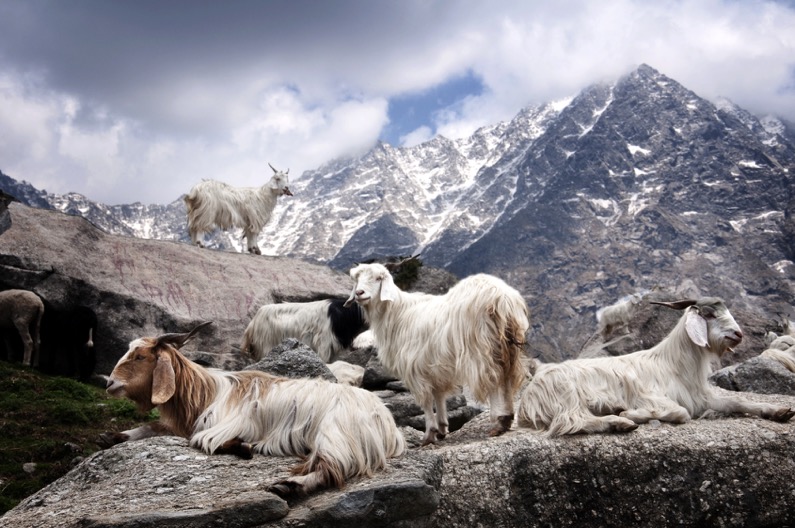Crazy about Cashmere

With Winter fast approaching, our AW17 collection has been more popular than we had ever hoped for. We were wondering what sets this collection apart from the rest, and we realised that many of our bestsellers have been from our beautiful cashmere range!
We're thrilled that everyone has loved our collection as much as we have, so we'll be talking today about cashmere; what is it, where does it come from why is it more costly than regular wool?Cashmere: What is it exactly?
It's safe to say that most people have at least heard of cashmere, and many recognise it as a high-end luxury fabric that is famous for it's rich, soft finish compared to regular wool which can often be itchy and uncomfortable, especially for those with sensitive skin!
You might be surprised in that case to learn that cashmere is actually made from goat's wool! The cashmere goats however are the free-roaming goats in South West Asia that grow a thick woolly undercoat to survive the harsh winter months.
So where does cashmere come from?
Cashmere (or Kashmir) goats are farmed in South West Asia almost exclusively, and they are a breed that is allowed to naturally roam in the mountainous regions throughout Mongolia, Tibet, India, Afghanistan and China in a very relaxed-style farming herd. It is, thankfully, not possible to battery farm these animals, as they wouldn't then develop the downy undercoat needed to produce the cashmere fibres, and so the goats are allowed to roam freely in the high mountains and the farmers simply follow and watch over the herds throughout the year. For this reason, cashmere is considered a more ethical farming practice than that of standard sheep's wool.
When the days begin to grow longer, and the temperature rises in the Spring, the goats begin to shed their coats. The farmers must then collect the wool, which is a mixture of both course hair, and the soft cashmere undercoat.
In a process called 'de-hairing', the latter is stripped away so it can be gathered, dyed and spun for yarn.
Why is cashmere SO expensive?
It's incredibly rare to find a 100% cashmere garment. It's almost always spun with an additional cheaper yarn in order to bulk the knit and make the cashmere go further. This may seem like corner cutting, but due to the specific farming conditions needed to raise cashmere goats, each animal is only capable of producing around 4oz of wool per year!
It would take 4 goats an entire year to produce enough yarn for a single sweater, making cashmere an extremely rare fibre to buy. It is estimated that whilst the sheep wool industry boasts a massive 2,000,000 tonnes of product a year, Kashmir farmers by comparison only stand to make around 6.5 tonnes total, that's only 0.00000325 of the sheep wool yield!
Can't you just use sheep's wool then?
There are a few very good reasons why cashmere wool is so sought after, and why it's well worthwhile maintaining a demand for Kashmir farming.
Testing on cashmere fibres has proven that despite being many times lighter than sheep's wool, cashmere is in fact up to 8 times more insulating, so the garments produced with this yarn are far more wearable and yet are much warmer than a standard wool item. As mentioned above, cashmere is also extremely supple when knitted, producing luxuriously soft garments that won't itch or chafe when worn close to the skin, making it the ideal choice for many of us who can't stand those itchy christmas jumpers anymore!

There are many benefits and disadvantages to using different blends of different organic fibres such as sheep's wool, cashmere, mohair and cotton as they all bring unique and interesting properties and variations to the garments available throughout the year, but it's our opinion that for the delicate softness and tactility that screams luxury and sophistication, cashmere simply can't be beat!
Shop our beautiful cashmere pieces online at LV Clothing, or pop in and see the collection first hand in our Manchester Showroom!


